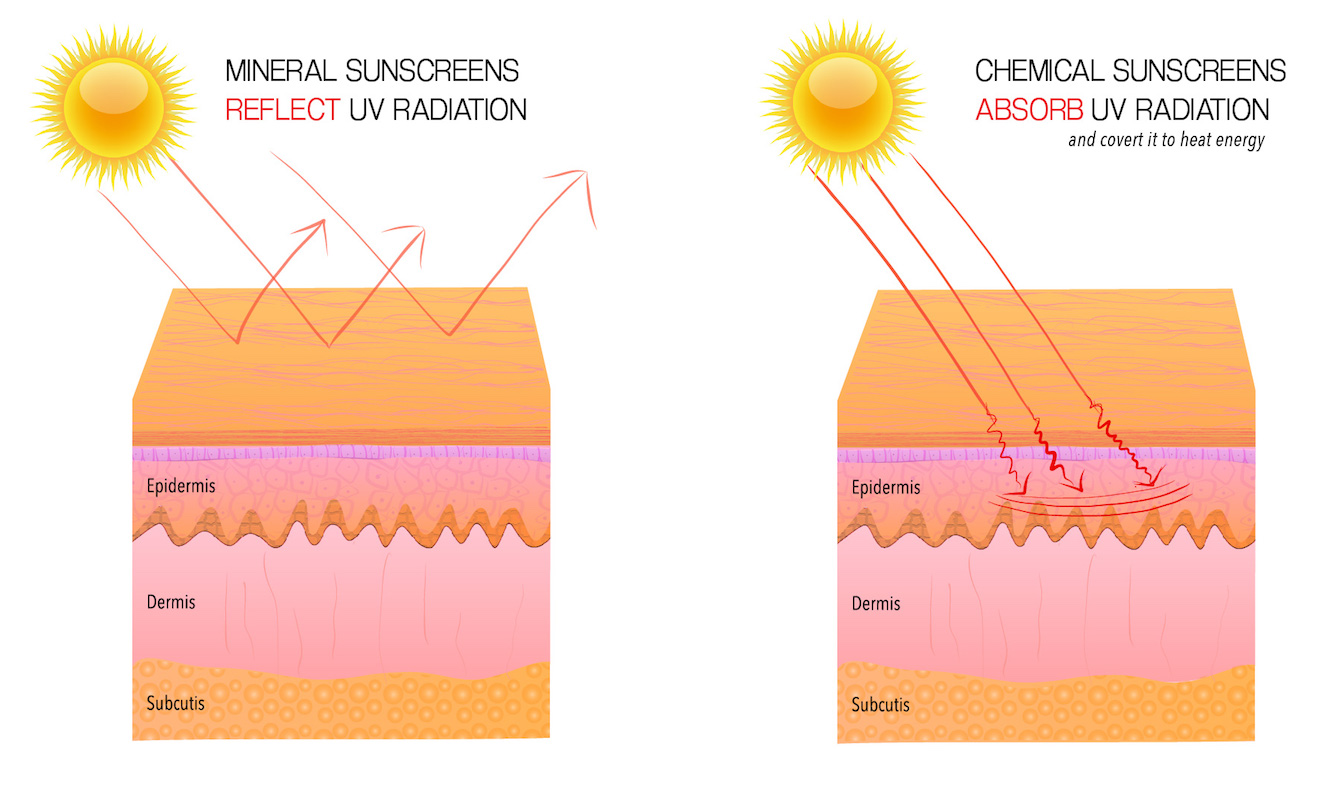The Difference Between Chemical and Mineral Sunscreens
Is SPF The Best Way To Determine Sunscreen Strength?
We may think that SPF is the best way to determine a sunscreen's strength, but that's not the case.
The active ingredients are what really make a difference, because they determine stability, strength, coverage, and comfort.
Active Ingredients
There are two categories of active ingredients in sunscreens: mineral filters and chemical filters.
There is a huge distinction in them, in how they behave, work, and feel.
Mineral Filters
There are only two Mineral (also known as Physical, and Inorganic) UV Filters: Zinc Oxide and Titanium Dioxide.
They are the #1 and #2 rated filters in the world, because they reflect UV radiation, and a very broad spectrum of UV radiation at that. They essentially act as a reflective shield on your skin, to block and reflect UV radiation before it's able to harm the skin.
Chemical Filters
There are dozens of Chemical (aka Organic) UV Filters, the most common being avobenzone, oxybenzone, octinoxate, and homosalate.
Rather than reflecting UV radiation, chemical filters absorb UV radiation, inducing a chemical reaction with the chemical filters to change the UV Radiation to heat energy. This chemical reaction happens on the surface of your skin, and within the epidermis. The chemical filters are thereby able to "neutralize" some UV radiation by transforming it to heat energy.
Absorbance Range
How much UV light do the UV filters filter (absorb or reflect)?
Mineral Filters
Zinc Oxide and Titanium Dioxide reflect a wide range of UV Radiation, as well as other forms of solar radiation, making them the strongest sunscreen filters worldwide.
Chemical Filters
Chemical filters only absorb a small range of UV radiation, as you can see in the chart below. This is why many chemical filters must be combined to have adequate sun protection.
Furthermore, many chemical sunscreen filters have been proven hazardous, as they absorb within the skin, causing hormonal reactions, and even greater adverse environmental effects.
Oxybenzone
The most significant chemical filter to be aware of is oxybenzone. Oxybenzone is one of the most popular chemical filters (because it can also absorb UVA (aging) rays), and can be found in over 60% of sunscreens. It has been proven to be an endocrine disruptor in both humans and corals. Oxybenzone being released into our water systems through sunscreen use has bleached and killed significant coral populations. This has disastrous effects for the rest of the ecosystem, as a large portion thrives on coral.
To learn more about oxybenzone, please see our oxybenzone article.
Take the pledge to be oxybenzone free today.



